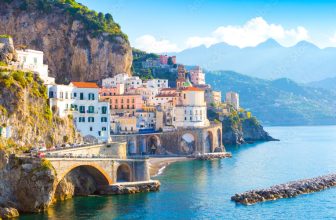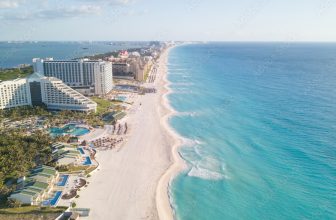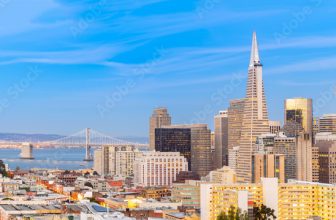
New Zealand is an island nation in the southwestern Pacific Ocean. It has two main landmasses and over 700 smaller islands, covering a total area of 268,021 square kilometers. During your travels, you should take the time to learn more about the different languages spoken in New Zealand. In this article, you’ll discover the best ways to explore the diverse culture of New Zealand. Also, learn more about the tourism industry and the best times to visit.
Map of New Zealand
If you’re planning a vacation to New Zealand, you will find a Map of New Zealand very useful. This map will help you plan your trip by showing the best places to visit and things to do. It can also help you decide which places to stay. Here are some tips on using a Map of New Zealand to help you get the most out of your trip:
First, you must know that the country is comprised of several islands, the two largest of which are the North and South Islands. The smaller islands are Stewart Island and Chatham Island. The country is located in the South Pacific Ocean, about two thousand kilometers from Australia. It is characterized by a temperate climate and mild weather system. The country was originally a British overseas territory, becoming a self-governing region in 1852. It was a liberal country when it granted women the right to vote in 1890.
Another advantage of a Map of New Zealand is its accuracy. A detailed map is essential for travel planning and research, and a Map of New Zealand can help you find your way around the country. By following the directions, you can avoid any pitfalls. And once you know where to go, you can plan the perfect trip. There is no need to fret about missing a flight, as these maps are accurate enough for travel planning. You can also check the weather forecast to avoid getting caught in a rainstorm or snowstorm.
The landscapes of New Zealand are diverse and varied, from the fiord-like sounds in the south to the pristine white beaches of the subtropical Far North. Both islands have mountains and volcanic plateaus. Throughout the year, temperatures can drop to below zero degrees and soar above thirty. Depending on the region you’re visiting, the weather can be wet and cold on the west coast of the South Island, or dry and continental across the mountains. The Deep South of Southland, meanwhile, has a climate more like a tundra.
Languages spoken in New Zealand
There are a total of seven official languages spoken in New Zealand. The country is an island country in the southwestern Pacific Ocean. There are two main landmasses and over 700 smaller islands, making up its total land area of 268,021 square kilometers. There are no official languages spoken by the entire population of the country, but many New Zealanders do speak a variety of languages, including English. The following are the most commonly spoken languages in New Zealand.
Maori: New Zealand is home to around 600,000 Maori people, but only about 100,000 people speak the Maori language. Speakers are typically over 15 years old and make up around 3.7 percent of the country’s population. Maori was the sole language spoken on the main islands before Europeans came to New Zealand. Maori is the national language of New Zealand. There are also a number of immigrant languages, such as Afrikaans, Chinese, French, Gujarati, Hindi, Spanish, Tagalog, Tongan, and Yue Chinese.
In recent years, tensions have arisen between native New Zealanders and immigrants from overseas. While there are many differences between the two languages, both groups share the same ethnic groups and cultural practices. In the past, New Zealanders treated Chinese as an independent language, but now they co-exist alongside their New Zealand peers. The 2018 census shows that Hindi speakers in New Zealand have doubled their numbers since 2001. In 2001, there were only 22,759 Hindi speakers living in New Zealand. French speakers in New Zealand number 55116, up from just under 49,000 in 2001.
Kiwi slang consists of phrases and sayings passed down from generation to generation. Although Kiwis use the language in their everyday life, it can be confusing to foreigners. Try to look for words with dotted lines – these are words specific to New Zealand, which can be confusing for some. Hovering over them will reveal explanations. And don’t worry, Kiwis are very friendly and helpful! So don’t be shy about trying out their language!
Major cities
Although New Zealand is not a particularly urbanized country, most cities are located in the north and south islands. The capital is Wellington with a population of 203,800, and Christchurch, which is the largest settlement in the south, has about 1.5 times as many people as Wellington. The city was awarded the status of capital over 100 years ago. In terms of population, the list is quite compact, but the cities are still incredibly diverse.
In the past, the term “city” meant a borough council with a population of more than 20,000 people. However, with the reforms of 1989, urban areas became independent of local body limits. Today, a city is a place that has more than 50,000 people, and it is considered a cosmopolitan centre. Although some areas of New Zealand are governed by district councils, the population of the city is still large enough to be considered a city.
Some major cities in New Zealand were de-classified. For example, the former capital city of Wellington was split into four urban areas: the city of Wellington, Lower Hutt city, Porirua, and Upper Hutt. These areas were then categorized as large urban areas. These divisions caused Lower Hutt to enter the ranking between Dunedin and Tauranga. Similarly, the smaller cities of Pukekohe and Taupo are de-classified as secondary urban areas.
The largest city in the country is Auckland, which has about 1.5 million residents. In the South Island, Napier-Hastings is the economic center, with a population of 130 million. The city is prone to earthquakes. Nelson, the second oldest city in the country, is the third largest. Another city in the country is Dunedin. It was the most populous city in New Zealand until the late 19th century. Its geographic position on an extinct volcano has made it a popular tourist destination.
Tourism industry
The Tourism industry in New Zealand contributes a significant portion of the country’s economy, contributing an estimated $24.4 billion a year. In addition to the export value of New Zealand’s goods and services, it also contributes to the country’s GDP, generating $16.4 billion in total and 20.1% of the country’s exports. According to statistics, the Tourism industry in New Zealand employs 225,384 people directly and 158,802 people indirectly. The industry pays a hefty amount of GST – $3.9 billion annually.
However, despite the country’s booming tourism sector, many businesses are struggling. Many companies rely on tourism for their survival. Nomad Safaris, for example, used the hype created by the Lord of the Rings movie series to attract Chinese visitors. Its success, however, was dependent on the number of tourists coming to New Zealand from China. With the tourism industry in New Zealand suffering, the government has taken steps to address the issue.
The tourism satellite account provides an overview of the industry’s performance. It shows how tourism activity has changed in New Zealand over the past few years, including a survey of international visitor spending. It also provides information about regional tourism expenditure, visitor arrivals and accommodation statistics, and forecasts of international tourist numbers. The Tourism satellite account will be released in December 2022. These reports contain the latest information about the economy’s tourism sector. And don’t miss out on the Tourism satellite account and the annual report!
In New Zealand, tourism contributes an estimated 5.2 percent to the country’s employment. The Tourism industry generates a significant amount of international visitors, creating jobs and a stronger economy. The industry is a large one, and New Zealand has the most potential for continued growth. A 1% increase in tourism from Australia and Japan would result in a 60,000 increase in VAs per year. So, there is much potential to boost the industry and its economy in New Zealand.
Economy
New Zealand is an island country in the southwestern Pacific Ocean. It is comprised of two main landmasses and over seven hundred smaller islands that make up the country’s total area of 268,021 square kilometres. The economy of New Zealand is one of the most diverse in the world, with over 700 industries contributing to the country’s overall growth. Here are some of the most important sectors:
Agriculture and dairy products are among the largest sectors of exports, and New Zealand is the world’s second-largest supplier of dairy products. China’s milk scandal triggered a surge in Chinese demand for New Zealand’s dairy products. New Zealand’s trade with China increased by 51% in the first twelve months following the implementation of the New Zealand-China Free Trade Agreement in 2008.
Despite a small population, the standard of living in New Zealand is very high, and the country’s economy is highly developed. The private sector is responsible for distributing much of the country’s wealth. This enables residents to enjoy a comfortable standard of living and a high quality of life. While many countries struggle to compete with a country of this size and diversity, New Zealand is proud of its diverse economy. If you’re looking to expand your business, consider investing in New Zealand’s economy!
The Pacific region is New Zealand’s sixth largest trading region, accounting for nearly one-third of the country’s total exports. In 2011, the country’s exports to the Pacific Islands totaled $1.5 billion. The countries of Fiji, Papua New Guinea, and French Polynesia were its biggest individual markets. New Zealand also exports construction materials, medicines, and refined oil. Additionally, it has a role in regional security, environmental protection, and fisheries management.





